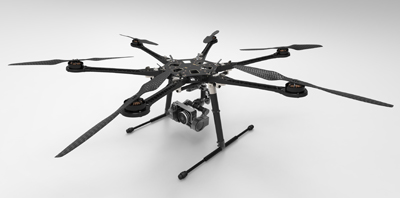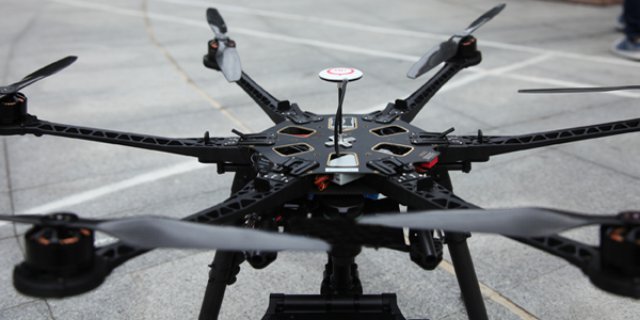Three men filming a reality show for the Discovery Channel were killed last week when their Bell 206B Jet Ranger crashed at Polsa Rosa Ranch in Acton, California.
The accident, one of the worst in recent memory, comes shortly after the Motion Picture Association of America filed disclosures revealing the organization is lobbying the Federal Aviation Administration to create guidelines governing the use of UAS. The MPAA argues that its UAS offer a safer, cheaper way to shoot aerial cinematography, and says federal guidelines are years overdue.
According to Colin Guinn, the North American CEO of DJI Innovations, a company that manufacturers unmanned aircraft, accidents such as Sunday’s are all too common in the industry, and they could be avoided if the government would move faster to unleash Hollywood’s UAS army in waiting.
Next month, a colleague of Guinn’s will shoot a dramatic closing moment of the upcoming film 10 Things I Hate About Life on the Santa Monica pier. The shot, he explains, is a close-up on the lead actress sitting in the ferris wheel; the camera will pan out from her face to capture the pier and and the surrounding landscape.
 “We could easily do that with an RC [remote controlled] helicopter — hover 15, 20 feet away, get right on them, then slowly pull away and reveal the coastline,” Guinn says, but, “since the California Film Commission won’t grant permits for using UAS [Unmanned Aircraft System] right now, because the FAA guidelines haven’t come out yet, we’re going to be using a full-scale aircraft to get that shot.”
“We could easily do that with an RC [remote controlled] helicopter — hover 15, 20 feet away, get right on them, then slowly pull away and reveal the coastline,” Guinn says, but, “since the California Film Commission won’t grant permits for using UAS [Unmanned Aircraft System] right now, because the FAA guidelines haven’t come out yet, we’re going to be using a full-scale aircraft to get that shot.”
UAS have been used by filmmakers for years (in 1995, Emanuel Previnaire won a technical Academy Award for his pioneering use of unmanned helicopters for cinematography), despite the fact that, in the absence of guidelines, it’s technically illegal to be paid for or otherwise profit from operating an unmanned aerial vehicle.
Guinn calls the FAA’s heel-dragging on UAS “criminal.” “We’re going to be hovering our helicopter out over the Santa Monica pier, or over the water, well outside the velocity chart, several minutes at a time getting this shot where human lives are at stake,” Guinn explains. “People die doing this. Instead of us using a little drone to get the same shot. What happens if the UAS fails? It crashes in the water. Who cares?”
The MPAA filed a lobbying disclosure in January, but Howard Gantman, spokesperson for the organization, says that the association has been asking the government agency to issue guidelines for several years now.
“Right now, we’re interested in having some good common sense regulations for what’s essentially a small helicopter,” Gantman says. “It’s a couple years’ overdue already.”
A spokesperson for the FAA confirms that the rules that would govern commercial use of UAS are still in the process of development. “There is currently no provision under the regulations for someone to operate an unmanned aircraft and get paid for it,” says Les Dorr of the FAA. “That’s the type of thing that the rule we are drafting will cover.”
At this time, Dorr said, there is no estimated date at which the rule will be completed.
Source: Buzzfeed

